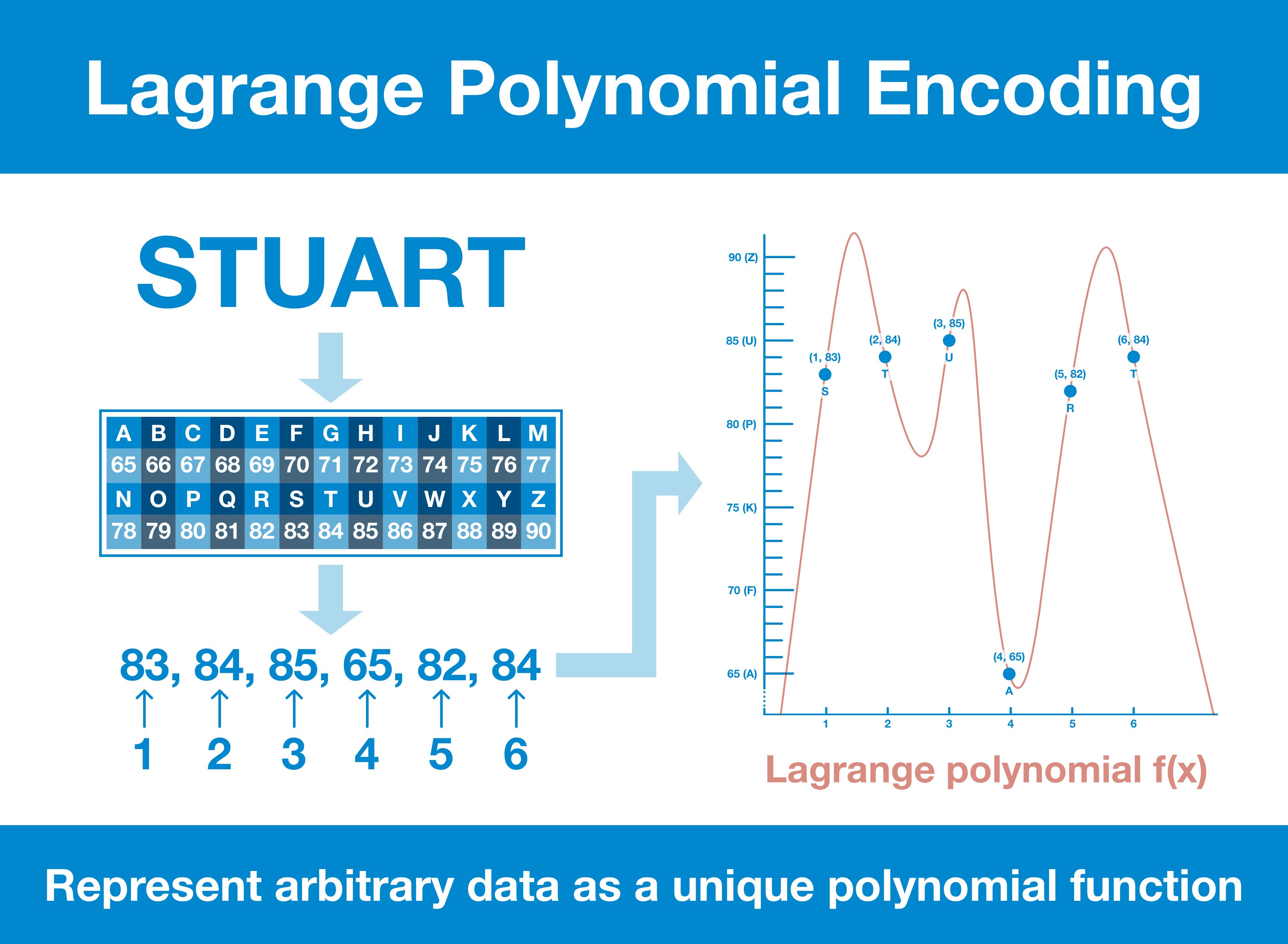
¶ Polynomial Encoding
¶ Prerequisites
¶ Polynomials
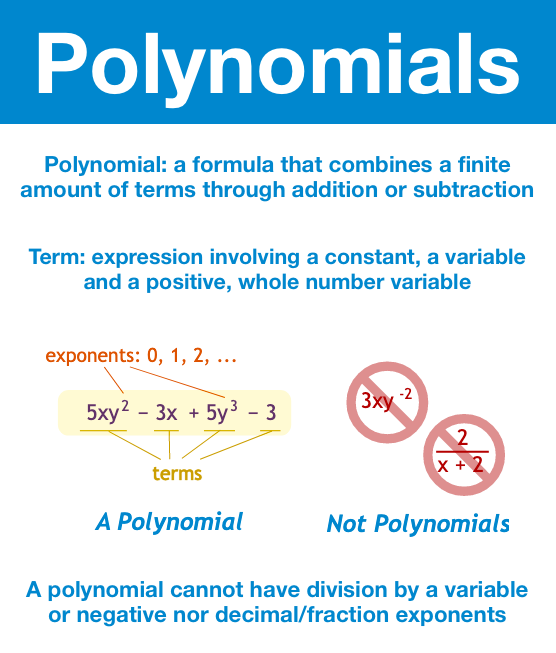
A polynomial is an equation made up of one or more groups of terms that are combined together with addition or subtraction.
Normally you would see a polynomial written in function form (as seen below).
¶ Functions
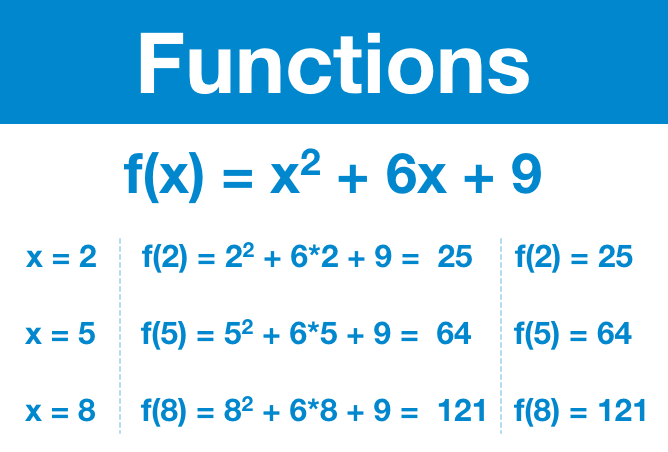
The f(x) notation can be read as "x is a placeholder in this function. When I am ready to evaluate it, replace x with the evaluation number and calculate the result."
A function can generate an infinite number of points; you control the input (x) and so you can just keep changing it to produce more and more outputs.
And so, a function is an incredibly efficient way to express data. One line can represent infinite points.
¶ Lagrange Polynomial
So, here's a question: if a function can represent a huge amount of data in one expression, can we go backward?
Can you take a huge amount of data and create a representative single expression?
The answer, of course, is yes! And we've know how for over 200 years!
A Lagrange polynomial the simplest, unique polynomial that fits a particular set of data (simplest meaning it has the least possible polynomial terms -- lowest possible degree).
Frankly, the math is absurd; we will take it for granted.
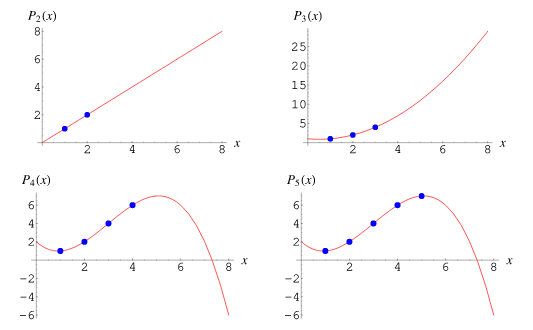
Regardless of how wild your data is, there exists a line that passes through all of it.
All you really need to know about a Lagrange polynomial that is is the simplest function that will evaluate to all of your points. And that it's (relatively) easy/quick to compute.
In fact, let's just assume that it's actually so quick and easy to commute that it is entirely irrelevant to modern computing.
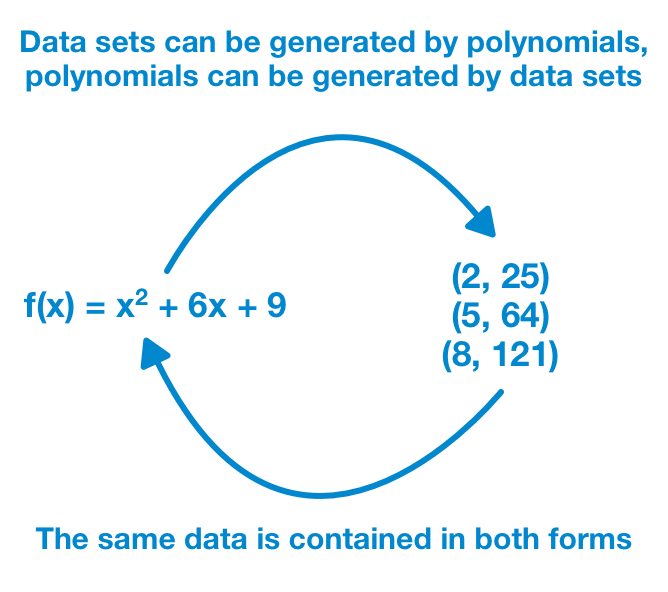
That we can basically consider a function and a set of evaluation points equivalent.
¶ Encoding Data
Let's take a step away from polynomials for a moment; I want you to think about computer data. For example, let's take a look at a single world: STUART.
These 6 letters are displayed to you, but that's not how your computer understands them. Your computer thinks in numbers and math, and so must represent STUART numerically. Behind the scenes, each letter is represented by a number.
The number is stored by the computer, it is only changed to a letter for human eyes.
Here is an encoding table for the Latin alphabet:

Every letter has a unique number; a computer will store and process the numerical version, a human will be able to work with the letter version.
And so, STUART is 83, 84, 85, 65, 82, 84
Using this method, we can convert any data into an ordered list of numbers.
¶ Data to Data Points
STUART = 83, 84, 85, 65, 82, 84.
Put another way:
- First position: 83
- Second position: 84
- Third position: 85
- Fourth position: 65
- Fifth position: 82
- Sixth position: 84
How about we just write it like this: (1, 83), (2, 84), (3, 85), (4, 65), (5, 82), (6, 84)
In fact, you can transform any data into a set of points of an x,y graph by breaking the data into pieces.
- X: the piece number
- Y: the specific data at that piece number
Once you have a set of points, you can derive the Lagrange polynomial.
¶ Generating a Polynomial
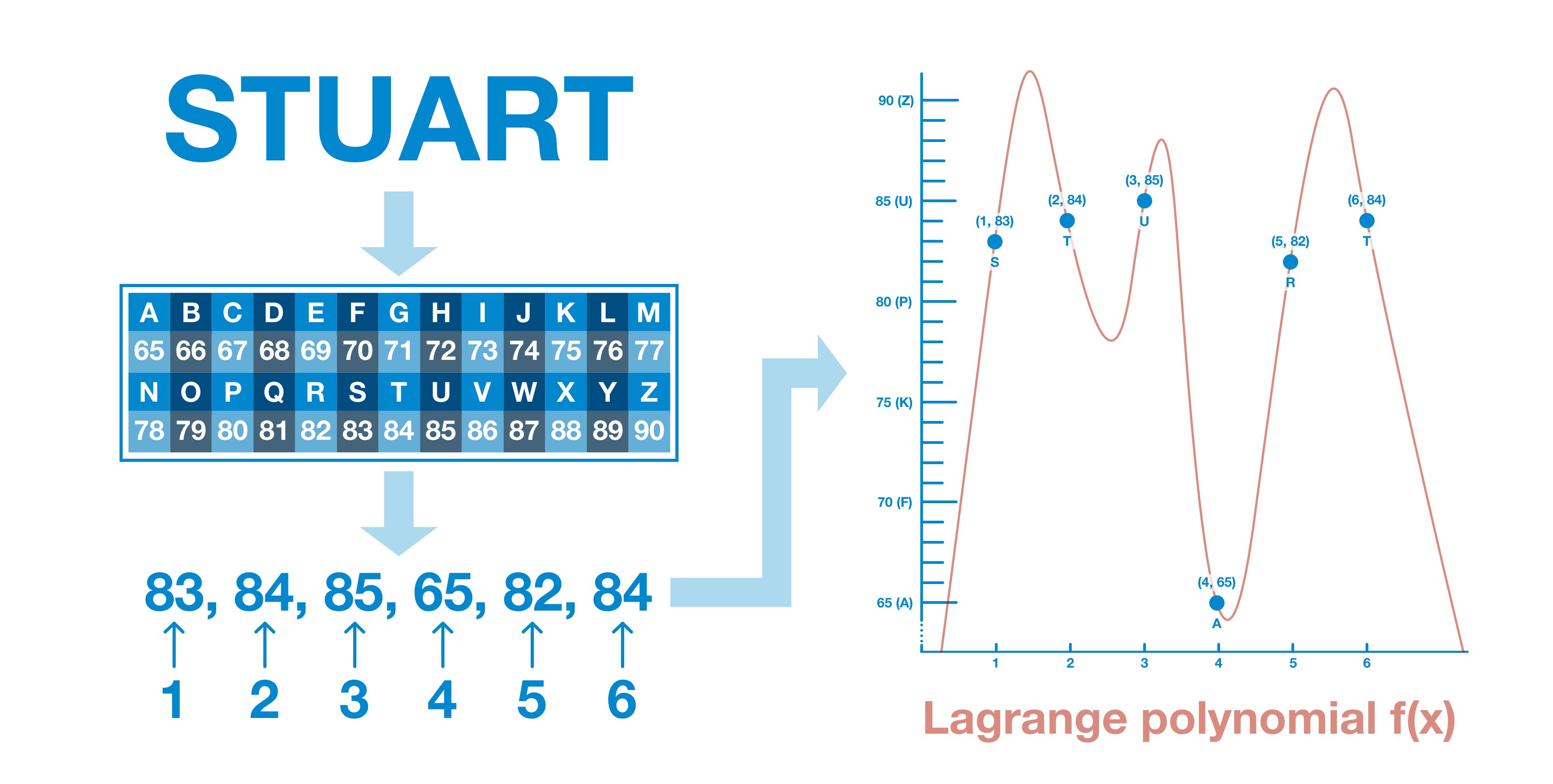
Take your data (converted into numbers, broken into chunks) and add it to a graph, one chunk at a time.
When all the data is graphed, "draw" the polynomial through it to derive a single formula that expresses every data point.
¶ Summary
This is what we are here to learn:
- it is possible to represent an arbitrary set of data as a polynomial
- you can (relatively) quickly and easily find the equation of said polynomial through a process known as the Lagrange Interpolation
As we continue forward, we will learn why this is a useful property. For now, just remember the big picture:
Data → polynomial → data
Data = polynomial
¶ Resources
Source Material - Twitter Link
Source Material - PDF